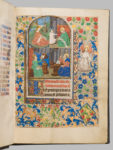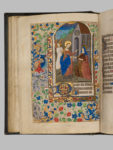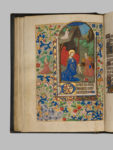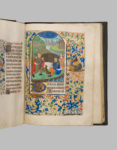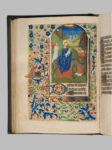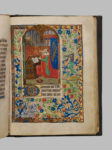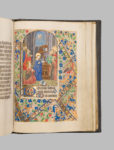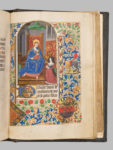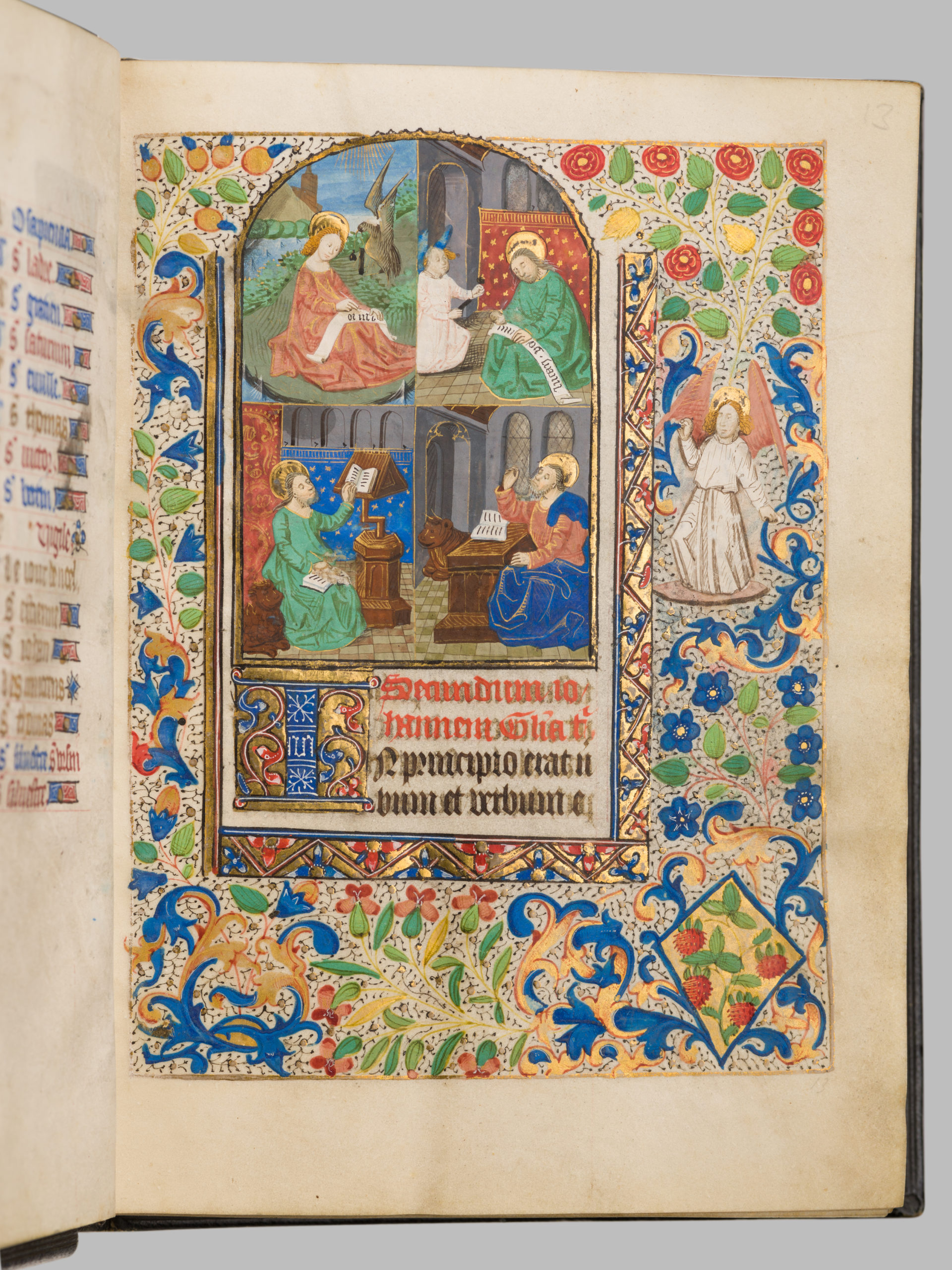
Book of Hours, Master of the Échevinage de Rouen, c. 1455–85 [MS102]
Rouen
Manuscript on parchment, ff. 140 + early parchment flyleaf. Bound in black crushed morocco over pasteboard (20.5 x 15 cm)
This richly illuminated manuscript is a Book of Hours: a liturgical book that contains prayers to the Virgin Mary to be recited at certain times of day. Following a calendar at the beginning of the manuscript (fols 12r–12v), the text is interspersed with twelve lavish, full-page illuminations consisting of scenes mostly from the New Testament.
The manuscript was decorated by the Master of the Échevinage de Rouen, who is sometimes referred to as the Master of the Geneva Latini. In addition to other types of manuscript, the Master’s work survives in numerous Books of Hours, including one in the Bodleian Library (MS Douce 253) and another in the Cleveland Museum of Art (1952.227). They were the leading illuminator of Rouen in the second half of the fifteenth century.
The borders of each page are decorated with vibrant floral patterns with gilded details, which are sometimes interrupted by geometric strips of gold. Beside the full-page illuminations figures watch the scenes from within the borders. They range from more conventional subjects, such as a man praying (fol. 58v), to the more bizarre, including a man doing a handstand (fol.71r) and an aquatic-chicken hybrid with dragon-like wings (fol. 55r).
Towards the end of the manuscript are signs of its former owners. In the final full-page illumination (fol. 125r) the manuscript’s original owner is depicted in a black hood. She kneels in prayer before the Maria lactans: a common depiction of Mary in which she breastfeeds the Christ child. The face of the Virgin has been re-painted, most likely in the nineteenth century. Below is a roundel containing a coat of arms. This has been painted over a now-erased image, probably the arms of the book’s original owner.
At the end of the text are entries written in French at the end of the sixteenth century (fols 139v–140v). They record the date on which the owner of the book, Jean-Ambroise de Malabarbe (here referred to as ‘Monsieur de Malabarbe’) married his wife Elizabeth le Begat (23 May 1580) and the birth dates of their fourteen children.
Literature: Neil R. Ker and Alan J. Piper, Medieval Manuscripts in British Libraries, Volume IV: Paisley–York (Oxford, 1969), pp. 636–37; Paul Yeats-Edwards, Winchester College (Warden and Fellows’ Library) Medieval Manuscript Collection: Brief History and Catalogue (London, 1978), p. 13.
Provenance: Given to Winchester College by Frederick Morshead, 1906.
Location: Fellows’ Library
